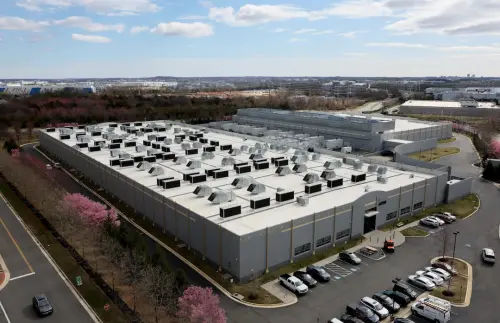Data Center Alley, a 30-square-mile area near Washington D.C. housing over 200 data centers, consumes approximately the same amount of electricity as Boston. Power company officials were alarmed when 60 of those centers unexpectedly disconnected from the grid one day last summer and switched to on-site generators.
This mass disconnection was triggered by a standard safety mechanism in the data center industry designed to protect computer chips and electronic equipment from damage caused by voltage fluctuations. However, it resulted in a significant surge in excess electricity, as noted by federal regulators and utility executives.
The resulting imbalance forced grid operator PJM and local utility Dominion Energy to reduce output from power plants to safeguard grid infrastructure and prevent a potential cascade of power outages throughout the region.
This incident, reported in detail for the first time, highlighted a new vulnerability in America’s electrical grid: unannounced disconnections by data centers. John Moura, Director of Reliability Assessment and System Analysis for NERC, noted that as data centers expand and consume more energy, the grid is not equipped to handle the abrupt loss of large facilities. "At some level, it becomes too large to withstand unless more grid resources are added."
Traditionally, grid operators planned for large power plants tripping offline, but the rapid growth of data centers due to demands from AI and crypto mining necessitates new contingency plans, complicating the already complex task of balancing the nation’s electricity supply and demand.
Alison Silverstein, a former senior adviser to the chairman of the U.S. Federal Energy Regulatory Commission, emphasized that the behavior of data centers poses a real risk of cascading outages for entire regions.
The incident on July 10 occurred near Fairfax, Virginia, in an area known for its concentration of data centers serving companies like Microsoft, Google, and Amazon, where about 70% of the world's internet traffic is routed.
In response to the incident, a month later, the North American Electric Reliability Corporation (NERC) established a taskforce to investigate mass disconnections by data centers and crypto miners. A review of thousands of regulatory documents and interviews with industry executives revealed that a failed surge protector on Dominion's Ox-Possum 230-kilovolt line was the initial fault.
NERC's report in January examined the incident but did not disclose specifics regarding the fault's location, the number of involved data centers, or how PJM and Dominion coordinated to adjust the grid's electricity balance.
The frequency of near-miss events similar to the one in Data Center Alley has escalated in the past five years alongside the rise of data centers. Power consumption by these facilities has tripled in the last decade and is expected to double again by 2028, according to a Department of Energy report by the Lawrence Berkeley National Laboratory.
A review of disclosure filings by the Electric Reliability Council of Texas (ERCOT) reported over 30 near-miss events since 2020, triggered by large energy consumers like data centers and crypto miners disconnecting from the grid. A December 2022 incident involving a failed transformer in west Texas led to nearly 400 facilities unplugging without notice, creating an oversupply of nearly 1,700 megawatts, which accounted for about 5% of the grid's total demand. This incident forced 112 megawatts of power generation to cease.
As new data centers come online, the risk of power outages is expected to increase, according to a NERC forecast. The report indicated that most of the U.S. will face heightened risks of energy shortfalls over the next 5 to 10 years.
NERC has urged utilities to consider updating federal reliability standards for data centers and crypto miners. Many are designed to switch to local generators at any sign of grid issues to minimize disruptions to services such as Google searches or crypto mining.
Some grid operators have proposed requiring data centers to remain online during standard voltage dips, but operators resist this due to concerns over potential damage to electronic equipment. Last year, ERCOT withdrew a proposal to impose ride-through restrictions after industry pushback from the Data Center Coalition, which includes members like Amazon, Google, and Meta, citing costs and risks to equipment.
The coalition expressed its willingness to collaborate with grid operators to ensure effective grid management. "We fully recognize that grid planning and management is the responsibility of utilities and grid operators," said Aaron Tinjum, the coalition's Vice President of Energy.
Patrick Gravois, an ERCOT operations engineer, acknowledged the "high potential" for disconnection events to increase as larger operations join the Texas grid. He noted that ERCOT is still investigating what prompts major energy users to disconnect to avoid surprises in the future.
Ari Peskoe, director of the Electricity Law Initiative at Harvard Law School, highlighted that while regulators could require data centers to withstand voltage dips, this might drive large tech companies to relocate to states with looser regulations. Jim Simonelli, chief technology officer for Schneider Electric’s secure power division, emphasized that lessons from the events near Washington D.C. last July are vital for both utilities and the data center industry as they seek to become more grid-friendly.
